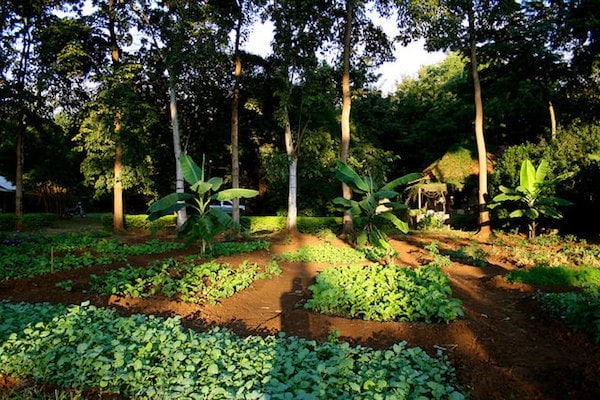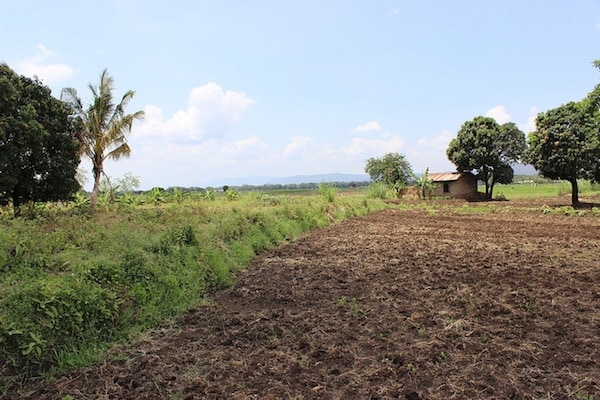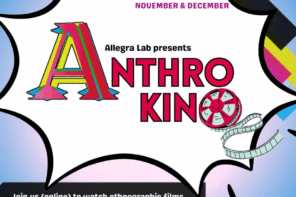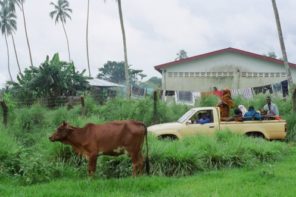The village of Chololo is situated around 40km South-East of the political capital of Tanzania, Dodoma. Often described as the poorest in the country, the region of Dodoma is constituted by a semi-arid area that is widely affected by increasing deforestation, soil erosion, droughts and flooding. Chololo was created during the villagization period in the 70s under the most famous Tanzanian President, Julius Nyerere, some years after the country’s independence. The great majority of Chololo inhabitants would identify themselves as Wagogo, a semi-pastoralist group of Bantu origins. Livestock keeping plays an essential role for the inhabitants, who mainly rely on subsistence agriculture though, based on the cultivation of local varieties of sorghum and millet.
A 32-month EU funded project took place in Chololo between 2011 and 2014 (Chololo Ecovillage, 2014). It was scaled up, in the following years, to three surrounding villages under the name of Chololo 2.0 (Chololo 2.0, 2018). The project aimed to convert the village into an ‘Ecovillage’ by means of ‘testing’ and introducing ecological technologies, ‘innovations’ in the domains of water, energy, agriculture, livestock and forestry in a multidimensional approach. Some examples of these ‘innovations’, amongst others, are ‘improved’ seeds, ‘improved’ livestock, and ‘improved’ stoves (Chololo Ecovillage, 2014). Chololo Ecovillage has been presented as a model of good practice for adaptation and mitigation to climate change, particularly in East Africa.
In the 90s, Crewe and Harrison (1998) posed the question of ‘whose development?’ collecting ethnographic material from Africa and Asia in order to reflect on the ideas of technology, progress, race and gender in the field of development. It is fundamental to ask, around twenty years later, in light of the current entanglement of development and adaptation strategies, ‘Whose green?’ This is a key question, even if not necessarily a comfortable one, which needs to be answered in order to promote adaptation strategies that can be considered as both fair and successful at different geographical scales .
In the context of the Anthropocene (Clark, 2014) – in which mitigation, adaptation to local environmental challenges, national and global discourses on climate change, poverty reduction and development are deeply entangled – the aim of my nine months ethnographic work in Chololo was to investigate the following questions: ‘What has been the impact of the introduction of technological ‘innovations’ to promote adaptation strategies? Why are some technologies adopted whereas others are not? Who, within the ‘community’, benefits from these ‘innovations’?’ and, finally, ‘When is it possible to claim that adaptation and mitigation strategies are just?

Image by Justin Raycraft (flickr, CC BY 2.0).
Chololo Ecovillage: A ‘secret formula of development’?
There was initial enthusiasm for Chololo Ecovillage project. Majinga, the one who brings gifts, was the name by which people in the village used to refer to one of the persons responsible for the project. The yields in the first year, in which the rain came regularly and abundantly, were considerable and allowed the households that were participating to the project to improve their economic situation. Chololo was described as Kijiji cha mfano, a ‘model’ village. However, when I arrived in October 2016, the situation was quite different. Some of the technologies introduced were simply not fit for the environment or not affordable and were abandoned at an early stage. The fish ponds, for example, were difficult to manage because of water scarcity, as well as the complete unfamiliarity of the people with fish farming techniques.
This could be considered part of the process of testing technologies in a new context and in an open-ended way; however, at the same time, it does pose some questions about fairness during the supposedly ‘bottom-up’ phase of project implementation (Valero, 2018).
More specifically, it interrogates its legitimacy (Adger, 2006), the actual possibility for the people in Chololo to have a voice in their own strategy to adapt to climate change beyond the formal mechanisms of participation in workshops and village meetings.
Moreover, other technologies – ‘improved’ stoves and ‘improved’ bulls, for instance – were initially taken up but were not adopted in the long term. Nja (scarcity of water and food), was quite widespread in the village, and food security was becoming a serious concern. The question of how it happened that the effects of this ‘secret formula of development’ and climate change adaptation strategies were barely perceivable at the village level just a few years after the end of the project could hardly be avoided. Three elements of the Chololo formula deserve detailed attention.
- Multidimensionality
A recent report claimed that multidimensionality was one of the major strengths of Chololo Ecovillage project (IPES-food, 2018). Dealing with interconnected interventions in water, agriculture, livestock, energy and forestry, multidimensionality has, at least on paper, a strong rationale. However, multidimensionality in Chololo played out in a rather complex way in practice.

Image by Julien Harneis (flickr, CC BY-SA 2.0).
For example, while describing their own conception of the ‘good life’, people in Chololo used to refer to water (as both the rain and the underground water sources), as the essential resource in the village, perhaps not surprisingly in a semi-arid area. As it is common to say in Tanzania, Maji ni uhai na uhai ni maji – Water is life and life is water. Without rain or irrigation (the latter is a recent practice in Chololo that is becoming widespread, especially amongst the youths), it is not possible to cultivate anything. As a consequence, daily life is increasingly hard. Moreover, without water, no project of afforestation can realistically work. Trees need to be irrigated regularly and this is not always possible when water is already scarce for people and livestock. Even if a holistic, all-encompassing, model could seem like a magic bullet to fight against poverty and climate change vulnerability, at the local level it is important to prioritize different interventions with realistic expectations, precisely because of the interconnected nature of socio-ecological dynamics.
Furthermore, this way of presenting ‘multidimensionality’ risks obscuring the political economic context in which the village is embedded. The ‘local’ scale, in this case a village, does never exists in a state of isolation and equilibrium vis-à-vis wider socio-economic processes. For instance, trees in Chololo are used mainly to produce charcoal that is sold in the nearby city of Dodoma. Chololo women collect dry pieces of wood in the forest and do normally not cut trees for the household needs. As a consequence, the wood fuel for local stoves results in a very small percentage of the fuel production that is causing deforestation.
In this context, it is legitimate to wonder whether interventions focused on household energy consumption at the village level can actually decrease deforestation when the latter is so deeply implicated in the metabolism of the city where the great majority of charcoal is sold.
If broader patterns of energy consumption at the national level are underplayed or ignored, and deforestation is depicted as a straightforwardly ‘local’ problem to be solved with a technical intervention, not much progress will be made in decreasing the rate of deforestation in Tanzania.
- Participation and local knowledge
The project’s commitment to participation consisted of a preliminary climate vulnerability and capacity analysis, a series of village meetings, and a final evaluation of the different technologies introduced that involved 55 farmers (IPES-food, 2018). Participation, widely advocated at the international level, has to go through a process of transformation during its implementation at the local scale. This process takes place at the micro-level of embodied everyday interactions and occurs in a socio-cultural field that is imbricated in global, national and local power imbalances.
At the initial stage, people in Chololo did not have the opportunity to decide which technologies had to be introduced, or if ‘improved’ technologies were at all a solution to poverty, water and food scarcity, or the disappearance of their forest. But also at a later stage villagers felt that they could not in fact participate in the implementation of adaptation strategies. In the village meetings only certain people with high social status were normally able to speak, and the people that tried to question some of the dynamics of the project (for instance the ‘equality’ in the distribution of some of the technologies) were dismissed as backward and ungrateful.
Lastly, without a constant process of engagement with local practices, the possibility of recognizing existing forms of competence in a meaningful way is highly reduced.
Local material skills, such as intercropping and cultivation with manure, were presented as ‘innovations’ by the Chololo Ecovillage project (Chololo Ecovillage, 2014) but had been in fact already present in the village for a long time. Many people in Chololo claimed that they had been using manure and intercropping techniques for generations. The reason why some people were not using manure was that they did not own cows and it would have been too expensive for them to buy it. In this case, adaptation strategies were not about introducing a new agricultural technique. They could have been, maybe, about making its distribution more equal at the village level. Finally, spacing practices were already introduced in colonial times and, similarly to what happened in the past, were adopted only by ‘well-off’ farmers because they require a considerable amount of labour.
- Engagement with the national strategy for climate change adaptation
A recent report claimed that ‘the inclusion of local institutions in both project design and implementation has […] allowed Chololo Ecovillage to become relevant to national-level policymaking and emerged as a benchmark case to build climate resilience’ (IPES-food, 2018). The model of Chololo Ecovillage, it has been suggested, could spread nationally (Valero, 2018). However, recently, the government has reclaimed some of the arable and grazing land in the village, in the context of its effort to (re)-establish the role of the city of Dodoma as the capital of the country. A military base will be built in between the villages of Chololo and Mapinduzi. Even if they received monetary compensation, some Chololo inhabitants now see themselves without the means to sustain their families in the long run and will have to quickly change their livelihood strategy in order to survive.
In 2014, it was perhaps not possible to foresee the territorial plans of the Tanzanian government. However, it is quite difficult to imagine that Chololo could be a model for integrated national strategies of climate change adaptation and mitigation when some of its inhabitants (including some of the people involved in the project) see the source of their livelihood jeopardized by the national strategy of development.
Agroecological transformation cannot be reduced to the mere introduction of ‘eco-innovations’ at the ‘local’ level.
Their novelty is highly questionable and their ‘ecological’ meaning ignores complex socio-cultural and economic dynamics at different geographical scales. As a result of this approach to adaptation, the ‘green’ strategies which were promoted in Chololo were not aligned with the lives of most of its inhabitants. Their voice was ignored despite formal mechanisms of participation. Consequently, these strategies did not lead to any meaningful increase in the actual possibility of the community to adapt to climate change. The crucial question thus remains: whose adaptation, if any, are we actually talking about?
References
Adger, W. N. (2006). Fairness in adaptation to climate change. MIT Press.
Adger, W. N., Arnell, N. W., & Tompkins, E. L. (2005). Successful adaptation to climate change across scales. Global environmental change, 15(2), 77-86.
Chololo 2.0. (2018). About – chololo 2.0. Retrieved December 15, 2018, from https://chololo2.wordpress.com/about/
Chololo Ecovillage. (2014). Chololo Ecovillage, A model of good practices in climate change adaptation and mitigation Title.
Clark, N. (2014). Geo-politics and the disaster of the Anthropocene. Sociological Review. https://doi.org/10.1111/1467-954X.12122
Crewe, E., & Harrison, E. (1998). Whose development? : an ethnography of aid. Zed Books.
Gill, J. (1987). Improved stoves in developing countries: A critique. Energy Policy, 15(2), 135–144. https://doi.org/10.1016/0301-4215(87)90121-2
Gliessman, S., Jacobs, N., Clément, C., Grabs, J., Agarwal, B., Anderson, M., … Rahmanian, M. (2018). CASE STUDIES 02 BREAKING AWAY FROM INDUSTRIAL FOOD AND FARMING SYSTEMS Seven case studies of agroecological transition. Retrieved from www.ipes-food.org
IPES-food (2018). Breaking away from industrial food and farming systems: Seven case studies of agroecological transition. Retrieved from https://ia600700.us.archive.org/15/items/7CaseStudiesAgroecology/CS2_web.pdf
Mosse, D. (2003). The making and marketing of participatory development, 57–89. https://doi.org/10.4324/9780203451809-7
Mosse, D. (2005). Cultivating Development: An Ethnography of Aid Policy and Practice (Anthropology, Culture and Society). Retrieved from https://scholar.google.co.uk/scholar?hl=en&as_sdt=0%2C5&q=david+mosse+cultivating+development&oq=david+mosse
Mosse, D. (2013). The Anthropology of International Development. Annual Review of Anthropology, 42(1), 227–246. https://doi.org/10.1146/annurev-anthro-092412-155553
Taylor, M. (Marcus E. (2014). The political ecology of climate change adaptation : livelihoods, agrarian change and the conflicts of development.
Urmee, T., & Gyamfi, S. (2014). A review of improved Cookstove technologies and programs. Renewable and Sustainable Energy Reviews, 33, 625–635. https://doi.org/10.1016/J.RSER.2014.02.019
Valero, J. (2018). Chololo, the ’secret formula’ for the future of development aid? – EURACTIV.com. Retrieved from https://www.euractiv.com/section/development-policy/news/chololo-the-secret-formula-for-the-future-of-development-aid/
Yamineva, Y. (2016). Climate Finance in the Paris Outcome: Why Do Today What You Can Put Off Till Tomorrow? Review of European, Comparative & International Environmental Law, 25(2), 174–185. https://doi.org/10.1111/reel.12160
Featured image by Claire Benjamin (flickr, CC BY 2.0).











Too bad that the government has interfered in such a way that participants now have to find other livelihood. Overall, this very well constructed, hands-on, long-term study has been beautifully elucidated by the writer. Congratulations to all involved!